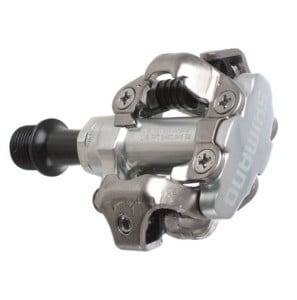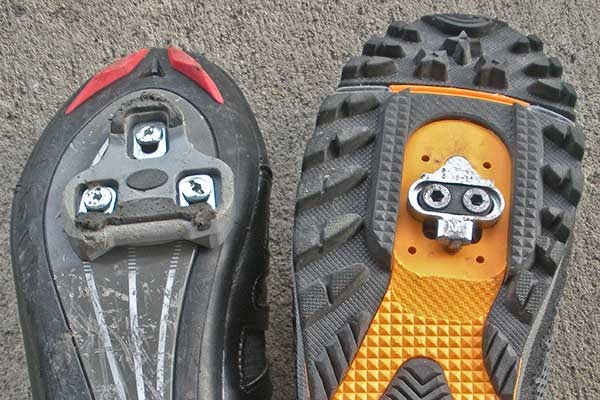This post explains pedal types and standards for screwing them into the cranks. There are two existing standards for mounting pedals and three pedal design types.
0. Two existing standards for mounting pedals: BMX vs standard
There are two major pedal standards depending on spindle mounting thread diameter. One is 1/2″ wide spindle, popularly referred to as BMX – present on BMX, kids bicycles and very seldom on some cheaper grown up models. The other is standard MTB and road bike pedal, with 9/16″ thick spindle. Both standards have 20 tpi (threads per inch).
If a bicycle is not a kids bicycle, then there’s 99% chance it has 9/16″ pedals. Only very cheap one piece cranks use the smaller, BMX 1/2″ standard.
Apart from these, a very rare, found on some vintage bikes, is French standard. 14 mm with 20.32 tpi.
Overview of standards dimensions, along with metric and imperial measurements is given in the table below:
| One-piece (cheap) cranks, BMX, kids bikes | 1/2″ (0.50″) x 20 tpi | 12.7 x 1.27 mm |
| Standard-3-piece cranks | 9/16″ (0.56″) x 20 tpi | 14.28 x 1.27 mm |
| Old French (no longer used) | 0.55″ 20.32 tpi | 14 mm x 1.25 mm |
1. Pedals with clips
Obsolete standard. Today present on vintage bicycles, some fixies – just for the style. These pedals come with straps for fastening feet into them. They are very tricky when one needs to stop suddenly – since they take time (and hands) to unfasten and get one’s foot off.


2. Platform pedals
Classic, flat pedals. There are various types. The most common ones are for city riding, plain flat pedals. There are also off road platforms, with small studs, screws, that improve grip when rider’s soles are wet from water, mud, or snow.


Off road pedals with screws can be tricky if they hit riders’s shin – they can cut pants or even skin. However, foot stays securely on these pedals and doesn’t slip when wet.
My short video about the platform pedal stud preventive maintenance.
3. Clipless pedals
These pedals require special shoes with cleats – i.e. mechanism for locking onto pedals. They offer best rider connection to the bicycle, while offering easy disengagement – rider just moves heel a bit to the “outside” and gets unclipped. They are also safe in case of a fall – releasing riders foot, something like skiing shoe mechanism.
There are two major groups of clipless pedals: road and MTB.
3.1. Road clipless


Popular standards for road clipless pedals from various manufacturers are: very common Shimano SPD-SL and LOOK, then Time. SPD is an abbreviation for Shimano Pedal Dynamics.
3.2. MTB Clipless


MTB clipless standards of various manufacturers include: very popular Shimano SPD and Crank Bros, then Time A-Tac.
3.3. Road compared to MTB clipless standard

Right – shoe with MTB clip.
As can be seen in the picture above, road shoe clips protrude a lot more, so such shoes are very uncomfortable to walk in. Also, walking on pavement/rocks can easily damage clip.
On the other hand, road standard connects over a greater surface, so the attachment is a bit stronger and requires less stiff a sole for comfortable weight transfer.
Generally, if one doesn’t ride only on paved roads, or plans (even shorter) walking during rides, then MTB standard is a lot more convenient – even for road bike. That is why many roadies use MTB pedals and shoes. On the other hand, if one rides road bike, and riders begin and end without walking around off bike – then road standard is a better option.
3.4. Combined (hybrid) pedals
There are also so called combined pedals – a mixture of standard platforms and MTB SPD clipless pedals. The drawback is they have two sides, so can be complicated if one often takes foot off pedals – looking for the correct side, whether one needs to clip in, or just use the platform.

Last updated:
Originally published:
